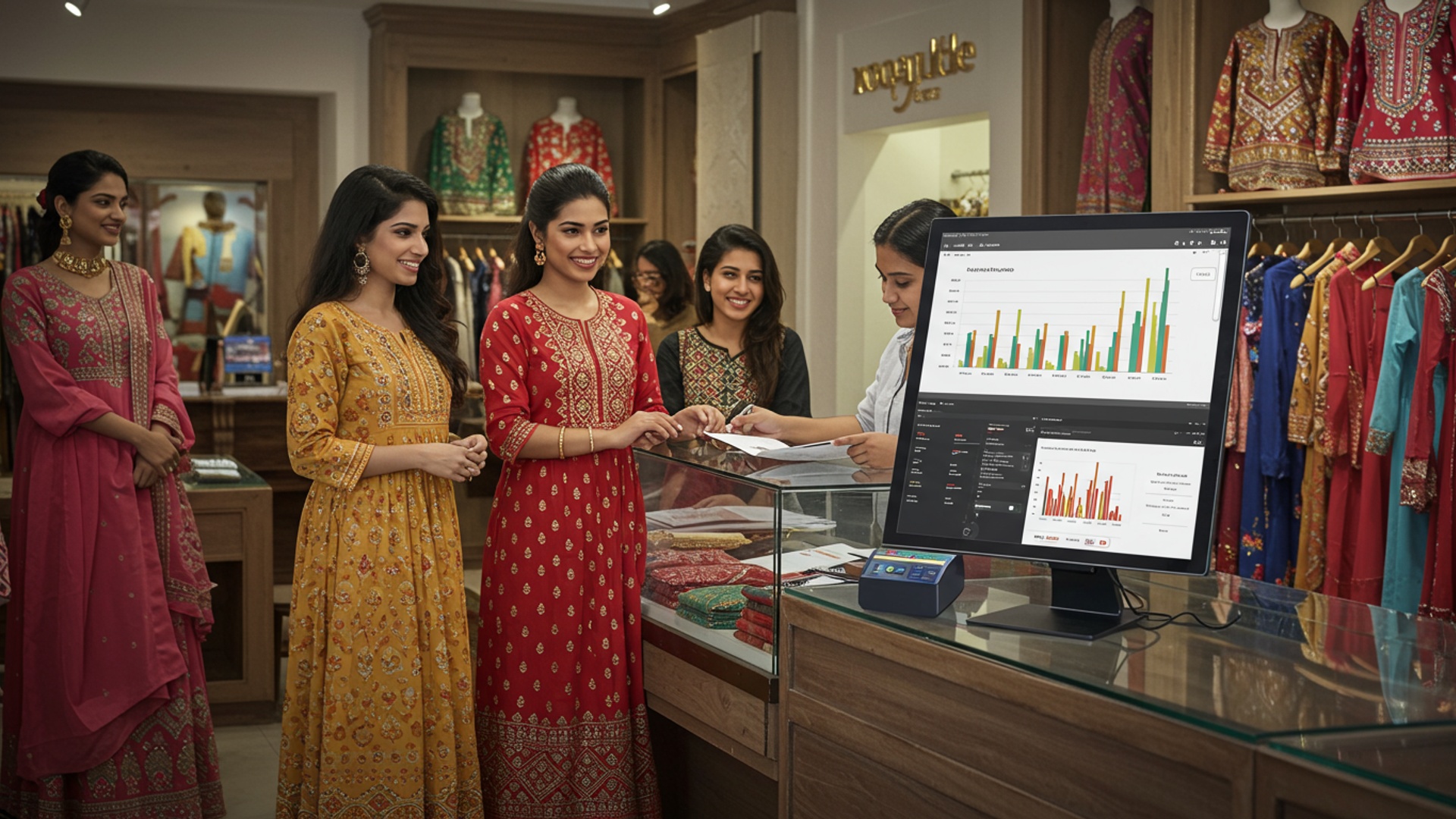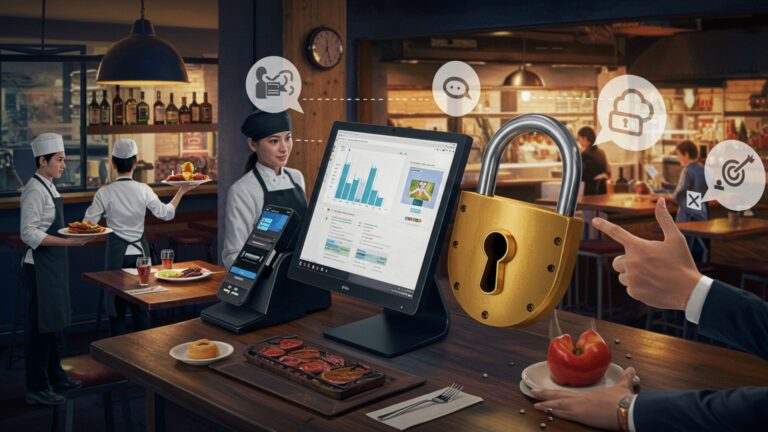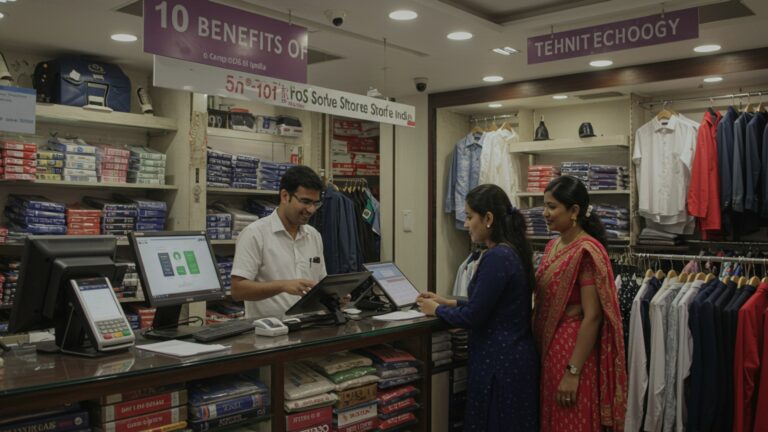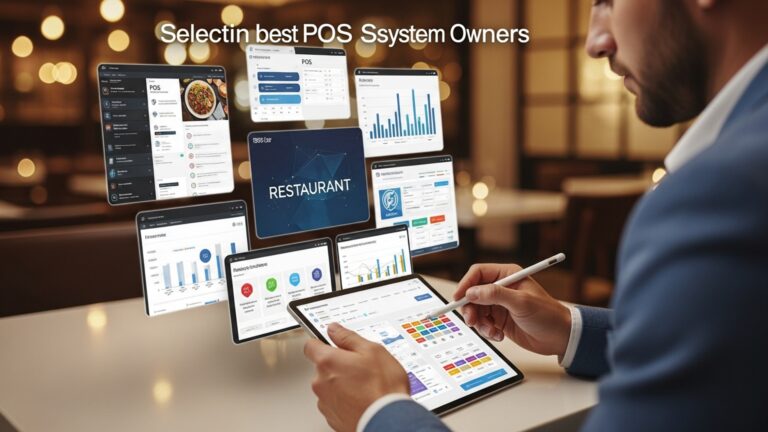Master 7 Key Benefits of a Modern POS for Ethnic Wear Stores
The vibrant world of ethnic wear, from intricate bridal lehengas to elegant festive kurtas, demands a retail system as sophisticated as its designs. In today’s competitive landscape, where digital storefronts complement physical boutiques and customer expectations for seamless experiences are paramount, relying on outdated sales processes creates significant operational bottlenecks. Modern retailers increasingly recognize that a robust pos for ethnic wear stores is no longer a luxury but a strategic necessity, providing real-time inventory visibility across diverse SKUs, accelerating checkout during peak wedding seasons. enabling hyper-personalized customer engagement. This technological upgrade empowers stores to optimize stock, interpret purchasing patterns for better merchandising. deliver the elevated shopping experience discerning customers now expect, transforming traditional sales into data-driven success.

1. Revolutionizing Inventory Management for Unique Collections
For ethnic wear stores, managing inventory goes beyond simple stock counts. You’re dealing with a vast array of unique items—different fabrics, intricate designs, sizes that might vary from standard Western sizing. often one-of-a-kind pieces. A modern Point of Sale (POS) system transforms this complex task into an efficient, real-time operation, which is a significant benefit for any pos for ethnic wear stores looking to thrive.
What is Inventory Management in a POS?
At its core, inventory management within a POS system is the process of tracking goods as they enter and leave your store. For ethnic wear, this means precisely monitoring every saree, lehenga, kurta set. accessory. A sophisticated system uses unique identifiers, often called Stock Keeping Units (SKUs), to categorize and monitor each item.
- Automated Stock Tracking
- Variant Management
- Low Stock Alerts
- Vendor Management
Every sale automatically updates inventory levels, eliminating manual counting errors and saving countless hours. When a customer purchases a specific design of an Anarkali suit, the system instantly deducts it from your stock.
Ethnic wear often comes in multiple sizes, colors. embellishment options. A modern POS allows you to easily manage these variants, ensuring you know exactly how many pieces of a ‘Royal Blue Silk Saree with Zari Border’ you have in each length or with different pallu styles.
Prevent popular items from going out of stock unexpectedly. The system can be configured to alert you when a particular style of men’s kurta or a trending ghagra choli set reaches a predefined minimum quantity, prompting you to reorder.
Track purchases from various suppliers, monitor delivery times. assess vendor performance directly within the POS. This is crucial when sourcing specific fabrics or artisan-made pieces from different regions.
Imagine ‘Aarohi Fashions,’ an ethnic wear boutique specializing in bridal and festive attire. Before their modern POS, their inventory manager spent days manually cross-referencing sales receipts with physical stock to prepare for new collections. Now, with their pos for ethnic wear stores, they can see in real-time which lehengas are selling fastest, which sizes of sherwanis are most popular. instantly identify slow-moving items for promotional sales, all with a few clicks. This level of detail ensures they always have popular items in stock and can make informed purchasing decisions for future collections, dramatically reducing both overstock and understock situations.
2. Streamlining Sales Operations and Enhancing Customer Flow
The checkout experience is often the last impression a customer has of your store. In the fast-paced world of retail, efficiency here is paramount. A modern pos for ethnic wear stores is designed to make the sales process smoother, faster. more enjoyable for both your staff and your customers.
- Faster Checkout Processing
- Flexible Payment Options
- Easy Returns and Exchanges
- Applying Discounts and Promotions
With intuitive interfaces and barcode scanning, transactions are completed in seconds. This means shorter queues, especially during peak festive seasons when ethnic wear demand soars.
Beyond traditional cash and card, modern POS systems integrate with various digital payment gateways, mobile wallets (e. g. , UPI, Google Pay). even ‘Buy Now, Pay Later’ services, catering to diverse customer preferences.
Processing returns or exchanges becomes a hassle-free task. The system quickly retrieves original transaction details, updates inventory. handles refunds or credits, ensuring a smooth experience even for intricate ethnic garments.
Seamlessly apply store-wide sales, seasonal discounts (e. g. , Diwali or Eid sales), loyalty program rewards, or specific item promotions directly at the point of sale. This ensures accuracy and speeds up the transaction.
Comparison: Traditional Cash Register vs. Modern POS
| Feature | Traditional Cash Register | Modern POS for Ethnic Wear Stores |
|---|---|---|
| Transaction Speed | Manual entry, slower. | Barcode scanning, quick processing, significantly faster. |
| Payment Types | Cash, basic card reader. | Cash, credit/debit, mobile wallets, UPI, BNPL, gift cards. |
| Returns/Exchanges | Manual lookup, prone to errors, time-consuming. | Instant transaction recall, automated inventory update, quick refunds/credits. |
| Promotions | Manual calculation, error-prone. | Automated application of discounts, loyalty points. |
| Inventory Link | None or very basic. | Real-time inventory updates with every sale/return. |
By adopting a modern POS, store owners can significantly reduce checkout times, minimize human error. provide a more professional and convenient shopping experience, especially vital when customers are making significant purchases like bridal wear or elaborate festive outfits.
3. Cultivating Stronger Customer Relationships with Integrated CRM
In the ethnic wear market, customer loyalty is built on trust, personalized service. a deep understanding of individual preferences. A modern pos for ethnic wear stores integrates Customer Relationship Management (CRM) features that empower you to do just that, moving beyond anonymous transactions to meaningful customer interactions.
CRM, within a POS, is a system designed to manage and examine customer interactions and data throughout the customer lifecycle. The goal is to improve business relationships with customers, assist in customer retention. drive sales growth. For ethnic wear, this means understanding what styles, colors. occasions your customers shop for.
- Customer Profiles
- Personalized Recommendations
- Loyalty Programs
- Targeted Marketing
Create detailed profiles for each customer, including contact details, purchase history (e. g. , “Ms. Sharma frequently buys Kanjivaram sarees”), preferred styles, sizes. even special notes like “prefers silk blends” or “shops for festive occasions.”
Based on purchase history and preferences, your staff can offer tailored suggestions. If a customer bought a specific designer lehenga, the system might suggest matching jewelry or a complementary dupatta for their next visit.
Easily implement and manage loyalty points, tiered rewards (e. g. , bronze, silver, gold customers), or exclusive discounts for repeat customers. This encourages repeat business and makes customers feel valued.
Use customer data to send personalized promotions, new collection alerts (e. g. , “New collection of Banarasi sarees just arrived!”) , or birthday discounts directly relevant to their interests, increasing engagement and conversion rates.
‘Virasat,’ a boutique specializing in traditional Indian wear, implemented a POS with robust CRM. They noticed that a significant portion of their clientele purchased outfits for specific festivals. By tracking purchase history, Virasat could segment their customers and send targeted emails about upcoming festival collections a month in advance. For example, customers who bought outfits for Eid received notifications about new Anarkali and salwar kameez sets, while those who shopped for Diwali received updates on lehengas and festive sarees. This personalized approach led to a 20% increase in repeat customer visits during festive seasons and a noticeable boost in average transaction value, demonstrating the power of a modern pos for ethnic wear stores in building lasting relationships.
4. Unlocking Business Growth with Data-Driven Insights and Reporting
Making informed business decisions is critical for success, especially in the competitive ethnic wear market where trends can shift rapidly. A modern pos for ethnic wear stores transforms raw sales data into actionable insights through comprehensive reporting features, giving you a clear picture of your business’s health and opportunities.
POS reporting tools collect and review various data points from your daily operations, presenting them in easy-to-grasp dashboards and reports. This allows you to identify patterns, evaluate performance. strategize effectively.
- Sales Performance Analysis
- Product Performance
- Employee Performance
- Customer Insights
- Financial Reconciliation
interpret which products (e. g. , “designer kurtis,” “silk sarees,” “men’s sherwanis”) are your best sellers, identify peak sales hours. assess sales trends over specific periods (daily, weekly, monthly, yearly, festive seasons). This helps in optimizing staffing and inventory.
Pinpoint your fastest-moving and slowest-moving items. This insight is invaluable for inventory planning, identifying items for promotional sales, or deciding which styles to reorder for your pos for ethnic wear stores.
Track individual employee sales, average transaction value. commission earnings. This data can be used for performance reviews, incentive programs. identifying training needs.
Beyond CRM profiles, reports can show overall customer spending patterns, most frequent buyers. average purchase value, helping refine marketing strategies.
Simplify end-of-day, week, or month reconciliation by generating accurate reports on cash flow, credit card transactions. overall revenue, making accounting much easier.
Report: Top 5 Selling Ethnic Wear Items (Last Quarter) 1. Product: Handloom Kanjivaram Saree - Sales: 120 units - Revenue: $60,000
2. Product: Embroidered Anarkali Suit Set - Sales: 95 units - Revenue: $38,000
3. Product: Men's Designer Kurta Pajama - Sales: 80 units - Revenue: $24,000
4. Product: Silk Blend Lehenga Choli - Sales: 70 units - Revenue: $49,000
5. Product: Oxidized Silver Jhumkas - Sales: 150 units - Revenue: $7,500 Report: Peak Sales Hours (Weekly Average)
Monday: 4 PM - 6 PM
Tuesday: 11 AM - 1 PM
... Saturday: 2 PM - 7 PM (Highest volume)
By regularly reviewing these reports, store owners can make data-backed decisions on everything from inventory purchasing and pricing strategies to marketing campaigns and staffing schedules, ensuring their ethnic wear store operates at peak efficiency and profitability.
5. Seamless Shopping Experiences with Omnichannel Capabilities
Today’s customers expect a consistent and convenient shopping experience, whether they are browsing online, interacting on social media, or visiting a physical store. Omnichannel capabilities, powered by a modern pos for ethnic wear stores, bridge the gap between these different touchpoints, creating a unified and fluid customer journey.
Omnichannel retail is a multi-channel approach to sales that provides customers with a seamless shopping experience, whether they’re shopping online from a desktop or mobile device, by telephone, or in a brick-and-mortar store. Unlike traditional multi-channel, omnichannel ensures all channels are integrated and communicate with each other, sharing real-time data.
- Unified Inventory Across Channels
- Click-and-Collect (BOPIS)
- In-Store Order Fulfillment
- Centralized Customer Data
The POS acts as the central hub for all inventory. If a customer sees a beautiful Banarasi saree online, they can verify its availability in your physical store in real-time. This prevents frustrating situations where an item is shown as available online but is out of stock in-store, or vice versa.
Allow customers to purchase items online and pick them up in your store. This is particularly convenient for ethnic wear, where customers might want to try on an outfit before taking it home, or need it quickly for an upcoming event. The POS facilitates the order processing and pickup confirmation.
If a customer visits your store but their desired size or color of a specific kurta is unavailable, your staff can easily check online stock via the POS and place an order for direct home delivery or inter-store transfer.
Customer profiles, loyalty points. purchase history are accessible across all channels. A customer who bought an item online will have their details recognized when they visit your physical store, allowing for personalized service regardless of their entry point. This holistic view is a game-changer for pos for ethnic wear stores.
Consider ‘Desi Threads,’ an ethnic wear brand with both an online presence and a physical boutique. A customer, Anya, browses their website, finds a stunning embroidered lehenga. isn’t sure about the fit. She uses the “check in-store availability” feature, powered by the POS, to confirm the lehenga is in stock at her nearest boutique. She then visits the store, tries it on. purchases it. Later, she receives an email from Desi Threads (triggered by her POS profile) recommending matching jewelry, demonstrating a seamless experience from online browsing to in-store purchase and post-purchase engagement. If the lehenga wasn’t available in-store, the associate could have ordered it for her directly from the POS, ensuring she still got her desired item.
6. Empowering Your Team with Efficient Employee Management
Your staff are the face of your ethnic wear store. their efficiency directly impacts customer satisfaction and sales. A modern pos for ethnic wear stores includes robust employee management features designed to simplify administrative tasks, track performance. empower your team.
These features streamline various aspects of human resources and operational management, freeing up managers to focus more on sales and customer experience.
- User Permissions and Access Control
- Time Clock Integration
- Sales Performance Tracking
- Commission Management
Assign specific roles and permissions to each employee. For example, sales associates might have access to sales and inventory lookups, while managers can perform refunds, access sensitive reports, or modify product details. This enhances security and accountability.
Employees can clock in and out directly from the POS terminal, simplifying time tracking and payroll processing. This ensures accurate records of hours worked, which is especially useful during fluctuating hours in peak seasons for ethnic wear.
Monitor individual employee sales performance, including total revenue, average transaction value. items sold. This data is invaluable for identifying top performers, providing targeted training. structuring incentive programs.
For many ethnic wear stores, sales associates work on commission. A modern POS can automatically calculate commissions based on individual sales, product categories, or specific promotions, reducing manual calculation errors and ensuring fair compensation.
By leveraging the employee management features of a pos for ethnic wear stores, owners can reduce administrative overhead, improve staff accountability. motivate their sales team with transparent performance tracking and automated commission calculations, ultimately leading to a more productive and engaged workforce.
7. Ensuring Future Growth with Scalability and Adaptability
The retail landscape is constantly evolving, with new technologies and customer expectations emerging regularly. Investing in a modern pos for ethnic wear stores isn’t just about current benefits; it’s about future-proofing your business. Scalability and adaptability are crucial features that ensure your POS system can grow with your store and adjust to future demands.
- Scalability
- Adaptability
Refers to the system’s ability to handle an increasing amount of work or its potential to be enlarged to accommodate growth. For an ethnic wear store, this means the POS can seamlessly manage more products, more transactions, more employees. even additional store locations without performance degradation.
Is the system’s capacity to be modified or upgraded to incorporate new features, integrate with other software (e. g. , accounting, e-commerce platforms), or adjust to changes in technology or business models.
- Multi-Store Management
- Integration Capabilities
- Cloud-Based Architecture
- API Access
If you plan to open more ethnic wear boutiques, a scalable POS allows you to manage inventory, sales. employees across all locations from a single, centralized dashboard. This provides a unified view of your entire business.
Modern POS systems are designed to integrate with a wide ecosystem of third-party applications. This could include accounting software (like QuickBooks or Tally), e-commerce platforms (Shopify, WooCommerce), marketing tools, or specialized fitting room technology. This flexibility allows you to build a comprehensive tech stack tailored to your needs.
Many modern POS solutions are cloud-based. This means regular updates are automatically deployed by the vendor, ensuring you always have the latest features, security patches. technological advancements without manual installations. It also offers accessibility from anywhere with an internet connection, a huge advantage for managing your pos for ethnic wear stores.
For businesses with specific or unique needs, an open Application Programming Interface (API) allows custom integrations and data exchanges with other systems, offering unparalleled flexibility.
Imagine ‘Rangoli,’ an ethnic wear store that starts as a single boutique. Their initial POS system efficiently handles their inventory of sarees and kurtas. As they grow, they launch an e-commerce website and open a second store. Because their chosen pos for ethnic wear stores is scalable, they can easily add the new store location and integrate their online inventory, ensuring all sales channels pull from a single, accurate stock count. The cloud-based nature means they don’t have to worry about software updates or server maintenance, allowing them to focus on expanding their ethnic wear collection and customer base. This adaptability ensures their technology investment continues to support their business evolution.
Conclusion
A modern POS system for your ethnic wear store transcends mere transaction processing; it’s a strategic advantage. It’s about more than just speeding up checkouts; it’s about gaining granular insights into your best-selling bridal lehengas during peak wedding seasons and understanding which handcrafted jewellery pairs best with them. From my own observations in bustling ethnic wear markets like Chandni Chowk, a robust POS is the silent hero, preventing the frustration of misplaced inventory and ensuring every customer finds their perfect outfit. My personal tip: don’t just implement; empower your team with comprehensive training. This allows them to leverage features like customer profiles to offer truly personalized recommendations, perhaps suggesting a matching scarf for a newly arrived salwar suit. Embrace this digital evolution to streamline operations, elevate the customer experience. ultimately, watch your unique ethnic wear brand not just survive. truly thrive. This isn’t just a software upgrade; it’s an investment in your future legacy.
More Articles
Learn How to Select the Right POS Software for Your Business Success
Master Retail Operations How to Implement POS Software for Success
7 Essential Inventory Management POS Strategies for Indian Businesses
Mastering Textile Retail 8 Must-Have POS Software Features
Master Apparel Store Billing 6 Features Your Software Must Have
FAQs
How does a modern POS help me keep track of all my unique ethnic wear items?
A modern POS system gives you real-time visibility into your inventory. You can track items by style, size, fabric. even color, reducing stockouts and overstocking of those one-of-a-kind pieces and varied collections. It makes managing your diverse stock much easier.
Will a new POS speed up things at the checkout counter?
Absolutely! Modern POS systems process transactions much faster, whether it’s cash, card, or mobile payments. This means shorter lines, happier customers. a smoother shopping experience, especially during busy seasons like festivals.
Can a POS help me interpret my customers better and keep them coming back?
Yes, definitely. A good POS tracks customer purchase history, preferences. contact info. This data lets you offer personalized recommendations, send targeted promotions for special occasions. build stronger relationships, encouraging loyalty to your store.
How can a modern POS help me figure out what’s actually selling well in my store?
Modern POS systems come with powerful reporting tools. You can easily see sales trends by product, time of day, or even employee performance. This insight helps you make smarter decisions about what to stock, what to promote. how to optimize your sales strategies.
If I sell both in-store and online, can a POS tie everything together?
Yes, a big benefit is seamless integration. A modern POS can sync your online and physical store inventory, sales. customer data. This means accurate stock levels across all channels and a consistent shopping experience for your customers, no matter where they buy.
Does a POS help with managing my staff?
It sure does. Many modern POS systems include features for employee management, like tracking sales performance, managing shifts. even calculating commissions. This helps you optimize staffing and reward your top performers effectively.
Is a modern POS more secure for my store and customer data?
Definitely. Modern POS systems come with enhanced security features, including encrypted transactions and secure data storage. This helps protect your business from fraud and keeps sensitive customer data safe, giving you peace of mind.





